From Battles to Business: A Military Veteran Turned COO Redefines Leadership
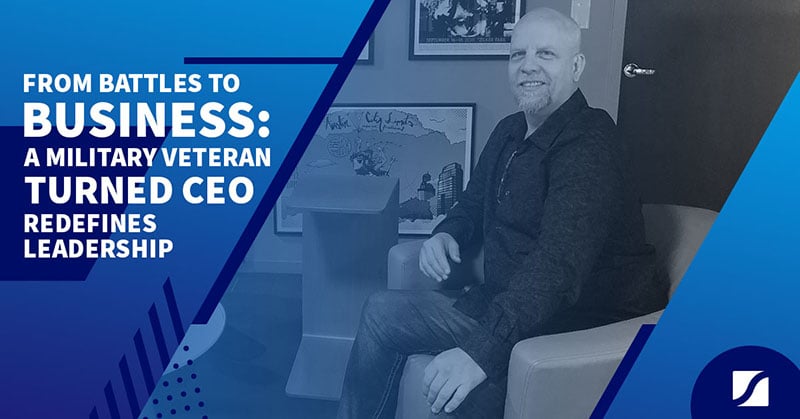
CEOs and top executives hold a lot of responsibility, from making corporate decisions to managing the operations and resources. Underlying all these responsibilities is the most important role a CEO and top executive plays: leadership.
Leadership will make or break your organization. There are many dynamics and aspects to leadership which spillover across multiple facets of life. That’s why many of the world’s greatest business leaders also showed great leadership in other areas of their life.
So what makes a great leader, and how can one apply the lessons of leadership in life into becoming an exceptional leader in business?
From my 10-year experience in educational environments and 20-year experience in businesses encompassing distribution, manufacturing, sales, service, and more, I’ve learned a lot about what it takes to be a great leader in business.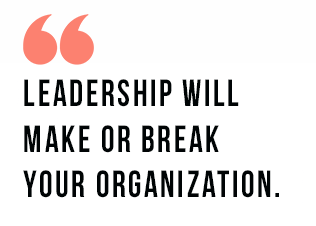
I also know that leadership is a life skill which can be drawn from many areas, and when one can take a more holistic approach to leadership in this way, they can become more effective leaders in business.
For me, a pivotal point to develop my leadership skills, came from when I managed 80-100 people in the U.S. Air Force. In this article, I’m going to summarize the key lessons I’ve learned about leadership, from the battleground to the boardroom.
Essentially, I break down leadership into three basic components:
- Leadership by example.
- Managing heuristics.
- Investing in your people.
Are You The Leader You Want To Be?
The first aspect is leading by example. I first learned about the concept of leadership by example in the military.
When I was in the military at the age of 21 years old, they called me a fast burner. And that is someone who climbed the ranks very quickly. Getting thrown into the role of leadership at such a rapid pace and young age gave me the most valuable leadership lesson. .png?width=800&name=tribe%20(1).png)
All of a sudden, I found myself not only in charge of my peers, but as a supervisor to some of the people I used to report to. Long story short, once this situation occurred, I found myself in a culture where everybody was unhappy. I too was miserable. So I called one of my guys, Troy, aside. Every organization has that truth teller, the one who won’t blow smoke. And Troy is one of those guys who will just tell you what he really thinks.
So I said to Troy, “Look, over the last few months it seems like the morale has gone down, the culture is really rough, and we're not as productive. I just don't feel like things are going really well. These are the guys I used to hang out with, we use to have a great time at work, but it's just not happening now, you know? Am I being overly sensitive, is something going wrong?"
Troy curtly responded, “No, actually what's happened, since you made rank, is you've become a real asshole”
That really hit me hard. Later that night, I couldn’t sleep because I kept thinking about what Troy said. It took me about a day before it finally sunk in that Troy was absolutely right. When the position and rank changed, I had let things really get to my head and it completely changed who I was.
So that weekend, I decided that that’s not the leader I wanted to be. I spent the entire Sunday thinking back on leaders that I’ve experienced and leaders I’ve read about. I started listing all the qualities of the leaders whom I really liked — from the leaders I had in the military, right through to the leaders and coaches I experienced in school and even as a boy scout. Then, I identified the qualities I really wanted to emulate. 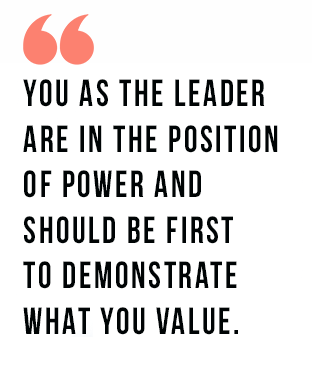 During the next routine Monday launch meeting, I stood in front of the 100 or so people in my team and apologized, “Look everyone, I'm really sorry. I went about this the wrong way. This is not the leader I want to be”. Then, I listed out the qualities I had identified as the leader I wanted to be and asked them to help keep me accountable to them. And then I worked hard to emulate those new qualities.
During the next routine Monday launch meeting, I stood in front of the 100 or so people in my team and apologized, “Look everyone, I'm really sorry. I went about this the wrong way. This is not the leader I want to be”. Then, I listed out the qualities I had identified as the leader I wanted to be and asked them to help keep me accountable to them. And then I worked hard to emulate those new qualities.
This experience was a really valuable lesson in leadership for me. When I started emulating those new qualities, they eventually carried our unit to win the Outstanding Unit Award, which is the highest unit award you can achieve outside of a combat situation. So it worked.
The biggest lesson I learned from this is the importance of leading by example. This doesn't just mean if you want people to work hard, then you work hard. It also means if you want people to be authentic with you, you have to be authentic with them. If you want respect, respect them first. If you want transparency, then be transparent with them first. You as the leader are in the position of power and should be first to demonstrate what you value.
Are You Managing The Heuristics Secretly Driving Your Business?
Next, the second component of leadership in business is all about managing heuristics and how it affects the rules of thumb your employees operate by.
How does this relate to strategy? Here’s how I break it down.
Strategy is essentially the highest stage. It is your big picture on how to dominate your industry and market segment. The stage below strategy is tactics. These are your actions and initiatives to accomplish the goal of your strategy.
Heuristics is then the stage below tactics, and most people in business are not familiar with it. What heuristics essentially boil down to are rules of thumb. Everyone has their rules of thumb that they live by and these rules guide people’s subconscious decisions. 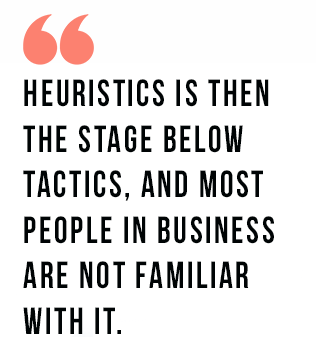
Let’s put this in the context of business. Let’s say you run a factory producing eyewear glasses. Your overall strategy is to focus on and be known for quality. But, at the middle management layer, all the frontline employees hear is, “We’ve got to cut costs. We’re over budget. We’re behind schedule. We have to reduce overhead”. And when an employee keeps hearing this, it becomes their rule of thumb.
Let’s imagine it’s a frontline person that keeps hearing the message to cut costs and speed up production. He creates a rule of thumb to cut corners instead of focusing on quality.
What do you think will happen when he sees a pair of glasses where the frame color is not exactly right, but the glasses are still functionally okay? Do you think that worker lets that glasses go through, or do they actually pull them back because the frame color is a little wonky and the employee is concerned about the quality issue?
In most cases what will happen is, that employee will let it go. Why? Because what they’ve heard is, “We have to cut costs, we have to reduce overhead, we have to speed up production”. They hardly hear the message about doing quality work and upholding superior quality in the market. So the employee will let those wonky glasses pass because the bigger issues on their mind is to cut costs.
This is how a rule of thumb that an employee carries with them and can work against your strategy.
Now, research suggests the average person has about 3,000-35,000 rules of thumb guiding their decisions on a daily basis. Let’s say only 10% of those decisions actually relate to their job. That's still 300 decisions that every employee in your organization exercises every single day subconsciously. These decisions can manifest in how they respond to a customer or co-worker, how they answer an email, how they work on the product, how they meet deadlines, and so on.
Essentially, these rules of thumb are really what drives your business. It’s a secret layer most people aren’t aware of and fail to manage. So how do you manage it?
From my experience, I have found several great ways to manage heuristics across your organization and culture. One of the best ways to manage heuristics directly at the individual level is by investing in your people, which leads us to the third component of leadership in business.
Are You Investing In Your People?
Investing in your people is one of the most rewarding things you can do for your company. It is also one of the strongest leverage points in any organization. 
There is an art to investing in your people. The key to ensuring your employees perform at a top-notch level is to help them discover and develop their strengths. The value received from developing their strengths will be three or four times what you would get from mitigating a weakness.
When investing in your people, it’s thus important to know the strengths of your employees. Maybe they're a very strategic thinker. Maybe they love creating infographics. Maybe they love creating standard operating procedures. Maybe they love doing public speaking.
Once you know their strengths, leverage them and you will see the results. When people do something aligned with their strengths, they tend to do a better job. They're more productive, they're more efficient, they're more effective, they're more engaged with their work, and they're happier.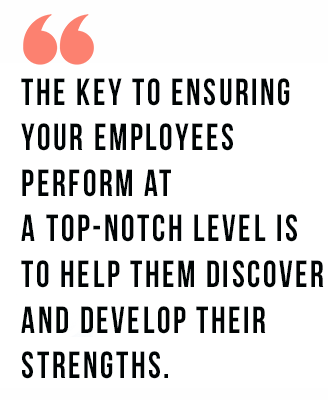
If you are observing procrastination in your employees, it’s typically because they are doing something that doesn’t fit their strength. You should strongly consider moving things when you see it doesn't fit someone's strength. If you can't rework them, then move them to someone whose strength it does fit, regardless of role requirements, departments or job duties. That’s the smart way to go.
After aligning your employees with their strengths, the next step is to understand each person's personal and professional goals, and then commit to helping them develop those.
I have seen the importance of this play out many times. Once, I even spent time at my lunch hour tutoring someone in their biology homework, knowing full well once they got the degree, that they were going to leave the company and follow their passion. But I was okay with that because I'm committed to my employee's personal goals. I want to help them achieve their goals as best I possibly can.
I feel like if you invest in your people in this way, if you really commit to help them succeed in their role, in leveraging their strengths, and in their professional and personal goals, you will find that they are more caring and invested in your business.
In summary, these three things brought together are essentially my secrets to leadership: leading by example, managing your heuristics, and investing in people. The success that you will achieve doing this is monumental. And finally, don't be an asshole!
Supercharge Your Leadership Skills
In Business
Supercharge your leadership skills with the Master of Business Dynamics, an interactive online program that puts together the best methodologies, frameworks and solutions taught by some of the most influential coaches and thought leaders of the modern business world.
Along with selected CEOs, top executives and entrepreneurs from around the world, you’ll go through
6 Master Business Courses over an 18-month period to learn how to lead your organization into greater alignment, higher productivity, and more growth.
Apply here now.



-1.jpg)